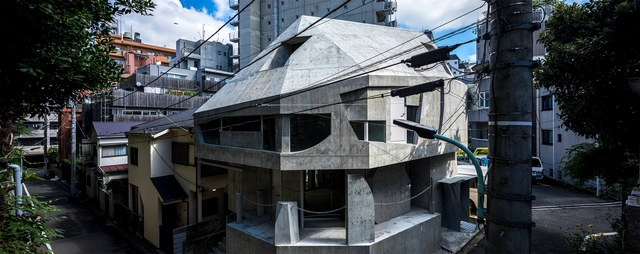
-
Architects: Daisuke Yamashita Architects
- Area: 35 m²
- Year: 2023
-
Professionals: Sasaki Structural Consultants, KUDO-KOMUTEN



Kengo Kuma uses materials to connect with the local context and the users of his projects. The textures and elementary forms of constructive systems, materials, and products, are exhibited and used in favor of the architectural concept, giving value to the functions that will be carried out in each building.
From showcases made with ceramic tiles to the sifted light created by expanded metal panels, passing through an ethereal polyester coating, Kuma understands the material as an essential component that can make a difference in architecture from the design stages. Next, we present 21 projects where Kengo Kuma masterfully uses construction materials.



Kengo Kuma (born 8th August, 1956) is one of the most significant Japanese figures in contemporary architecture. His reinterpretation of traditional Japanese architectural elements for the 21st century has involved serious innovation in uses of natural materials, new ways of thinking about light and lightness and architecture that enhances rather than dominates. His buildings don't attempt to fade into the surroundings through simple gestures, as some current Japanese work does, but instead his architecture attempts to manipulate traditional elements into statement-making architecture that still draws links with the area in which it's built. These high-tech remixes of traditional elements and influences have proved popular across Japan and beyond, and his recent works have begun expanding out of Japan to China and the West.

Faced with the challenge of designing homes on terrains with steep slopes - or in compact urban contexts that do not allow much variation in plan - several architects have experimented and proposed split-level homes to enhance the use of space, allowing, among other things, interesting visual perspectives.
These variations can be seen in numerous examples published on our site. Below, we have selected 50 examples that can help you in your next project.



The influence of Western civilization and the birth of modernization following World War II lead Japan to become the world’s second largest economy by 1968. With this came a host of problems, namely environmental pollution and the oil crisis, which triggered the reexamination of modernism in Japanese architecture and a series of radical experiments by young architects that inevitably lead to a new vision of the city.
Highlighting the work of these young architects, as well as historians, urban observers, artists and magazines of the 1970s, Japan’s participation at the 2014 Venice Architecture Biennale will spotlight the “independent, fundamentally innovative responses” that “unfolded a new fertile field of architecture” and revealed the “essential power” our profession has in the real world.


